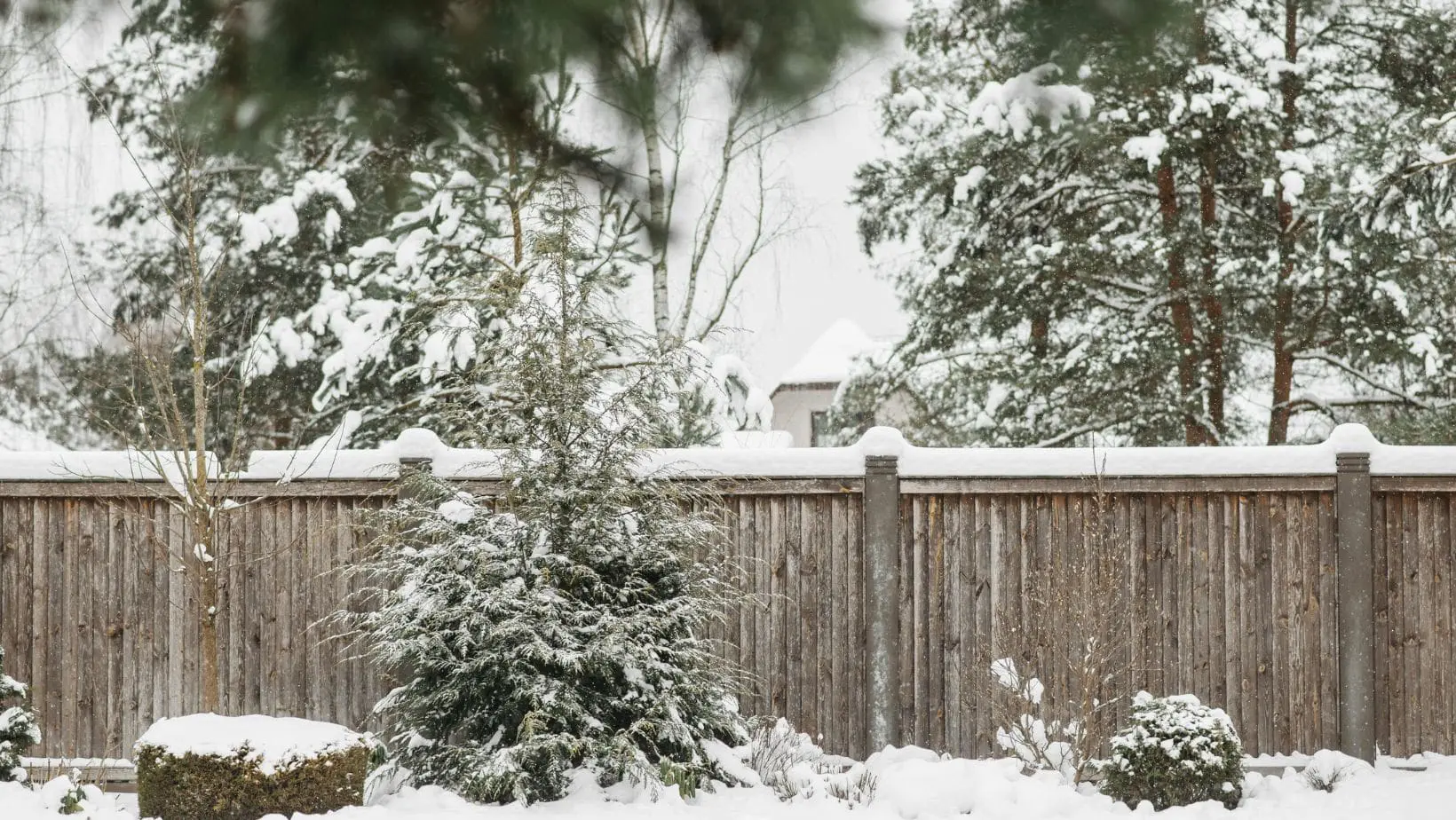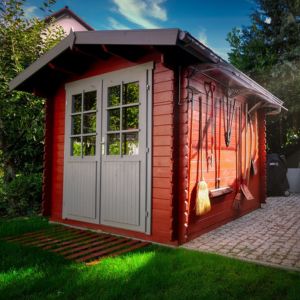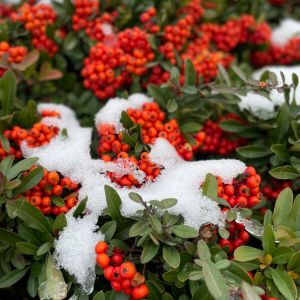
5 Important Jobs to Do in Your Garden Before Winter
With the temperature starting to drop and nights drawing in, there are plenty of clear reminders that winter’s not too far away. Bearing this in mind, now is the ideal time to prepare your garden for winter, by protecting both the natural and manmade elements of your outdoor area from the colder, harsher weather to come.
Let’s take a look at five of the most important things you can do to prepare a garden for winter, right now. Once you’ve completed these essential tasks, you’ll then be able to look forward to Christmas and New Year, safe in the knowledge that your garden will remain in rude health to welcome you back outdoors, next spring.
1. Tidy Up Your Patio with Garden Storage
 Over the summer months, you’re sure to have spent plenty of time in your garden. Unless you’re a particularly tidy and organised person, this means there’s a very good chance that your patio furniture, family’s bicycles, the kids’ outdoor toys, and (at least some of) your garden tools are still exactly where you left them.
Over the summer months, you’re sure to have spent plenty of time in your garden. Unless you’re a particularly tidy and organised person, this means there’s a very good chance that your patio furniture, family’s bicycles, the kids’ outdoor toys, and (at least some of) your garden tools are still exactly where you left them.
To get your garden ready for winter, you need to rectify this situation right now. And the best way to do this is by ensuring that all of these items are moved undercover and neatly organised, both to protect them from the winter weather and so you know exactly where they are when you next need them.
For most people, this will involve putting their various outdoor products into the shed or garage. However, if you don’t have sufficient room, or own items that need customised protection, it’s well worth exploring specialist garden storage units. These include tool stores, bicycle sheds, cushion storage and more, all of which are specifically designed to look after a particular type of item.
Regarding items that are too big to store (the most obvious being patio furniture sets), there’s still plenty you can do to protect them from the elements, this winter. Give them a clean to remove dirt and debris, apply any relevant waxes or oils, and then use a large waterproof cover to shield them from the weather.
And if you don’t already own some of these covers, you’ll find they make a very shrewd investment, particularly when you consider the cost of the patio furniture that needs protecting.
2. Clear Leaves and Other Garden Debris
 At this time of year, you see fallen leaves everywhere, don’t you? When they’re dry, they can appear quite attractive, adding to the autumnal feel. But once they get damp, not only do they look an eyesore, they become a potential slip hazard too. This doesn’t just apply when you’re on foot, but also in the car as they can significantly increase stopping distance. Therefore, it’s essential to clear them from both your patio and driveway, to prep your garden for winter.
At this time of year, you see fallen leaves everywhere, don’t you? When they’re dry, they can appear quite attractive, adding to the autumnal feel. But once they get damp, not only do they look an eyesore, they become a potential slip hazard too. This doesn’t just apply when you’re on foot, but also in the car as they can significantly increase stopping distance. Therefore, it’s essential to clear them from both your patio and driveway, to prep your garden for winter.
Fallen leaves can also create problems if you don’t clear them from your lawn. This is because they deprive the grass’ roots of light, oxygen and nutrients, as well as encouraging mould and harbouring pests.
In short, if you’re getting a garden ready for winter, clearing fallen leaves is one of the key tasks. And the best way you can do it is to purchase a leaf blower or vacuum shredder.
Powered by either petrol, electric or battery, leaf blowers use the principle of centrifugal force to blast out air, at very high speed, from their tubes. This makes them highly effective at blowing fallen leaves, and other garden debris, into easily manageable piles, for simple disposal.
Vacuum shredders go a couple of steps further. Not only do many of them have a leaf blowing function, they are also capable of hoovering up and then reducing green waste, so that it’s in the perfect state to add to your composter.
You can find our superb range of leaf blowers and vacuum shredders here. And if you’d like to find out more about this job before you buy, why not read Our Top Tips (and Best Tools) for Clearing Leaves from a Garden?
3. Prepare Garden for Winter with Proper Lawncare
 At this time of year, your lawncare might simply involve giving the grass its final mow of the year. When carrying out this job, put your lawnmower on a low setting, so it cuts the grass nice and short. This will keep it healthy over the winter months and promote better growth come spring.
At this time of year, your lawncare might simply involve giving the grass its final mow of the year. When carrying out this job, put your lawnmower on a low setting, so it cuts the grass nice and short. This will keep it healthy over the winter months and promote better growth come spring.
When you mow the lawn to prepare your garden for winter, be sure that the grass is dry. If you don’t, you run the risk of damaging the turf, creating bare patches, and even spreading diseases that will harm your lawn.
Other potential lawncare tasks, at this time of year, include aerating and scarifying…
Lawn Aeration
Aeration involves punching small holes in the lawn, so the soil becomes less compact. This allows more air, water and nutrients to find their way to the grass’ roots, making for a stronger, healthier, more attractive lawn.
Scarifying a Lawn
Scarifying describes the removal of thatch. This is an interwoven layer of organic matter, consisting of dead grass, moss and other garden debris, which deprives the grass’ roots of oxygen, water and nutrients, as well as harbouring pests and diseases. As thatch sits between the soil and blades of grass, it is impossible to remove through mowing alone. That is why you need a scarifier. These specialist tools aggressively dig into the soil to remove thick, embedded layers of thatch, aerating your lawn in the process.
If you’re in the market for any of these garden machines, be sure to take a look at our unbeatable range of lawnmowers, aerators and scarifiers now.
4. Check Garden Structures Before Winter
 Over the coming months, we’re far more likely to see high winds, snow and other challenging weather conditions, than at other times of year. So, if any of your garden structures aren’t in good condition, they’re going to get found out pretty quickly.
Over the coming months, we’re far more likely to see high winds, snow and other challenging weather conditions, than at other times of year. So, if any of your garden structures aren’t in good condition, they’re going to get found out pretty quickly.
Fencing
The most vulnerable garden structure is probably your fence run, which is particularly susceptible to damage from wind and snow. This makes it essential to check that each panel is in sound condition. When preparing your garden for winter, if there are any missing, damaged or rotting slats, be sure to repair or replace them as a matter of urgency.
Show the same level of care with the fence posts too – after all, they are vital to the structural integrity of your fence run. Again, if any part of the post is damaged, or not properly secured in the ground, rectify the situation immediately.
Garden Buildings
You should also take this opportunity to check your garden buildings. Although it would take an extreme weather event to collapse one of these structures, any deficiencies will get significantly worse over the coming months, as they’re subjected to long periods of cold and damp.
The best way to check a garden building’s condition is to conduct a slow walk-around inspection of both its exterior and interior. You should pay particular attention to the condition of the floor, roof, door, and joinery around the windows. Check for signs of rot, loose or missing parts. Then ensure that the roof felt is securely attached to the structure, as well as being free from holes or tears. Once again, if you spot any issues, repair or replace the part in question as soon as is practicable.
5. Get Garden Plants Ready for Winter
 The process of preparing plants to survive the colder, harsher winter months is known as ‘overwintering’. This can take a variety of forms, depending on the plant in question.
The process of preparing plants to survive the colder, harsher winter months is known as ‘overwintering’. This can take a variety of forms, depending on the plant in question.
Particularly tender or tropical plants will have to be moved indoors or to a heated greenhouse, if they’re to survive until spring. If the plant is half hardy, it should be okay outdoors unless the temperature dramatically drops, in which case you should move it into the greenhouse.
Hardier container plants may well still benefit from being relocated to a more sheltered spot in your outdoor area, or whichever part of your garden catches the most sun. The same applies to some potted trees. Those that aren’t native to a Northern European climate will probably benefit from having their pot covered in horticultural fleece or bubble wrap too, both of which are natural insulators.
Prepare Garden Soil for Winter
Another key overwintering task is to prepare garden beds for winter by adding mulch. This is an organic material, made from general garden debris, such as grass cuttings, leaves and hedge cuttings. It benefits the soil by adding nutrients, holding in moisture, and protecting against frost.
Now is the ideal time to spread a ring of mulch around newly planted/ less hardy trees and shrubs to help protect them over the coming months and prepare garden soil for winter. Later, towards the end of the season, you can then add further mulch across your borders, which will help the soil retain more moisture as the weather becomes warmer and drier.
Winter Pruning
Aside from overwintering, plant and tree garden prep in winter involves pruning. Providing the plant or tree in question is deciduous, it will have transferred its nutrient reserves to the roots and be dormant. Therefore, it will find pruning far less stressful and recover more quickly.
On the subject of pruning, just a couple of words of warning…
Firstly, if frost is forecast, postpone the task until the weather warms slightly. Otherwise, the extreme cold might damage the cut ends of the stems. Secondly, do not prune evergreen trees or shrubs at this time of year. Because their food reserves will still be in the foliage, this will deprive them of precious nutrients at what is a challenging time of year.
If you need a new pair of secateurs or cordless pruners for your winter pruning, you’ll find them within our Secateurs & Pruning Shears category here.
 Get Garden Ready for Winter with GMD
Get Garden Ready for Winter with GMD
Here, at Garden Machinery Direct, we have all the tools and machinery you need to prepare your garden, or other outdoor area, for winter.
And should you need advice about any of these products, our friendly, UK-based Garden Machinery Experts are always available to help, in any way they can.




